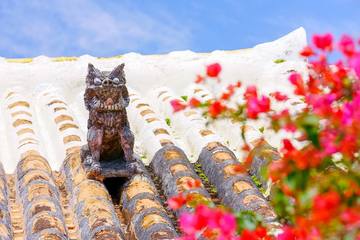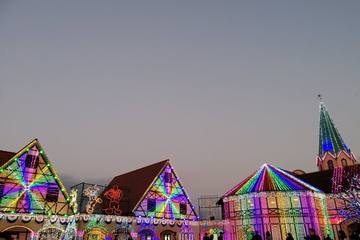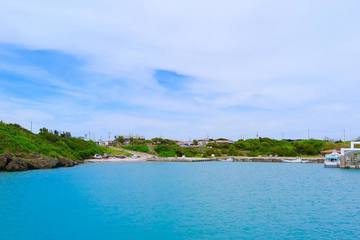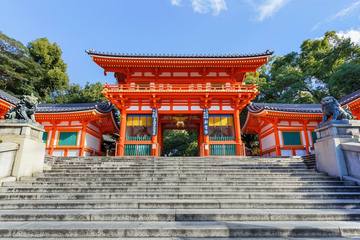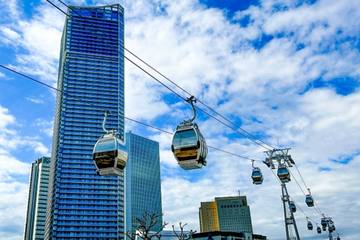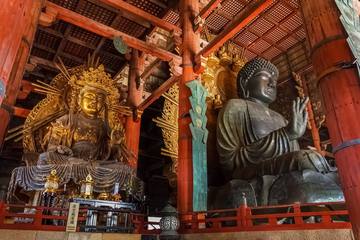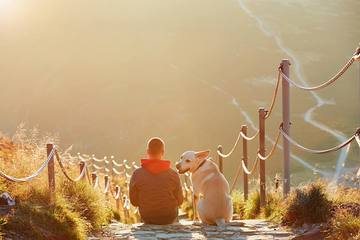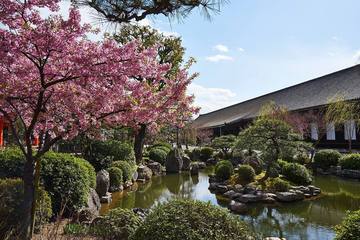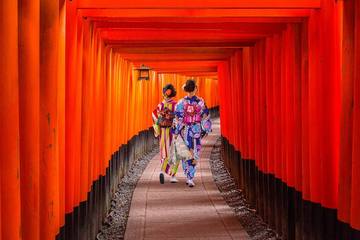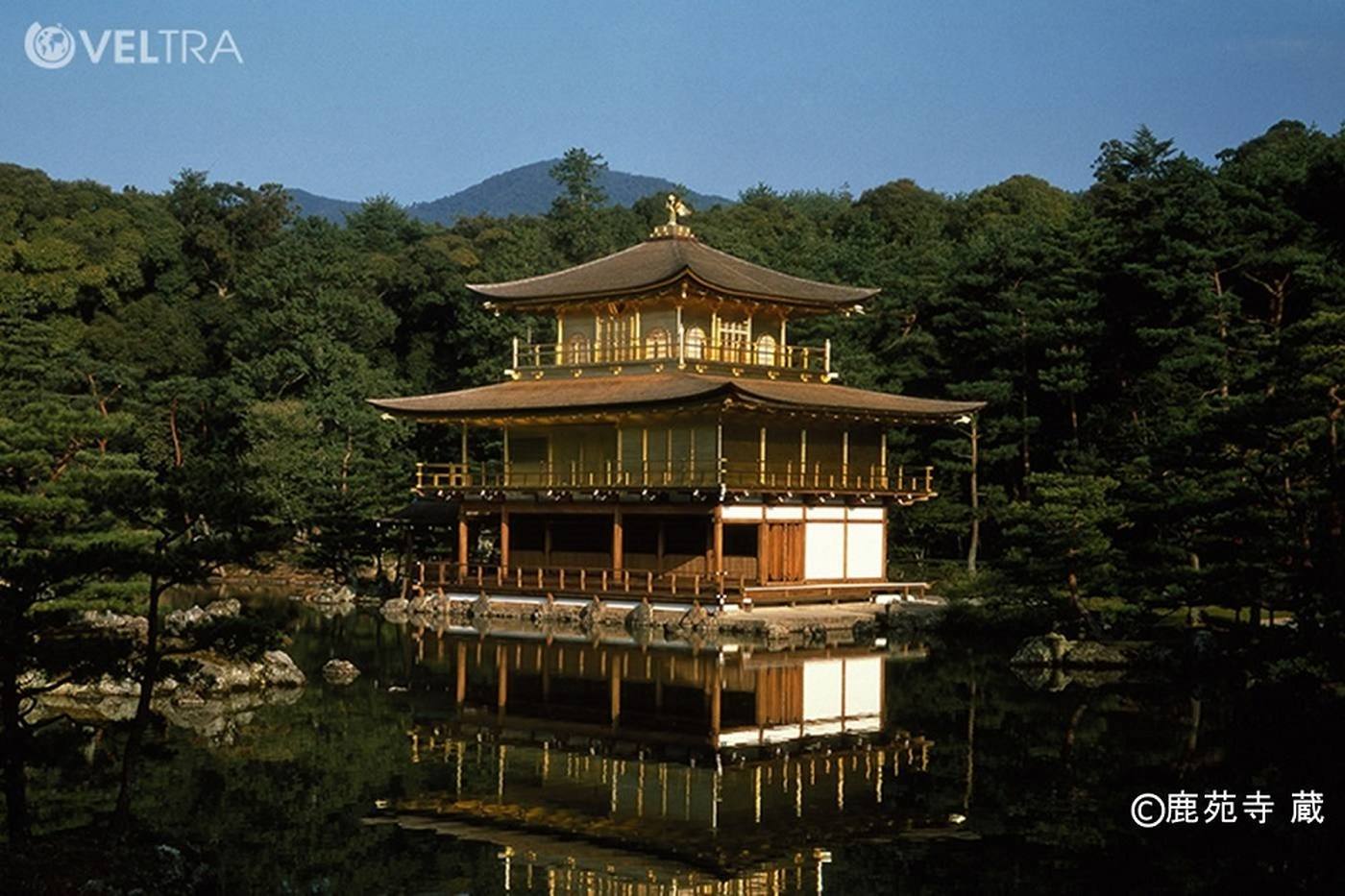
【Kyoto】Summary of Kinkaku-ji Temple | Introducing Model Sightseeing Route!
Kinkaku-ji Temple, also known as the Golden Pavilion, is not only famous in Japan but also internationally, thanks to its striking appearance adorned in brilliant gold. It is an essential destination for tourists visiting Kyoto, as the temple grounds and its surroundings are filled with historically significant buildings, offering a plethora of attractions. In this article, we will thoroughly explain the history of Kinkaku-ji Temple, detailed access information, its unique charm, and recommend a must-visit sightseeing route for those in the know!
*This article is translated using ChatGPT.
For the latest information on each tourist spot and facility, we recommend checking the official website.
- 日本 、京都府
INDEX
Basic Information about Kinkaku-ji Temple
Attractions of Kinkaku-ji Temple
Sekkatei (Evening Reflection Tea House)
Recommended Sightseeing Route around Kinkaku-ji Temple
Gourmet Spots near Kinkaku-ji Temple
Sobadokoro Gontaro Kinkaku-ji Branch
If you want to efficiently explore Kyoto, we recommend local optional tours
Basic Information about Kinkaku-ji Temple
History
Kinkaku-ji Temple, formally known as Rokuon-ji Temple, is one of the sub-temples of the Rinzai sect's Shokoku-ji Temple. It was named after its founder, Ashikaga Yoshimitsu, whose posthumous Buddhist name is Rokuon-in Dono.
Originally, it began as a villa called Saiho-ji or Kitayama-dai owned by Saionji Kintsune during the Kamakura period. After the downfall of the Kamakura shogunate, the Saionji family lost power and had to relinquish the property. In the Muromachi period, Ashikaga Yoshimitsu, who was the third shogun of the Ashikaga shogunate, acquired the abandoned site, which was in a state of disrepair. In 1397 (Oei 4), he built the mountain villa known as Kita-yama-dono, which eventually became Kinkaku-ji Temple.
In 1950 (Showa 25), the original building from the construction period was completely destroyed by arson committed by a university student who was an apprentice monk at the time. This incident caused a stir in society, and several renowned authors, including Yukio Mishima and Tsutomu Minakami, wrote novels based on the event. Using the original plans for dismantling and repairs that had been prepared before the fire, the temple was reconstructed in a manner closely resembling its original state in 1955 (Showa 30), and the iconic Kinkaku-ji Temple with its entirely gold-leaf-covered exterior was revived.
In 1994 (Heisei 6), it was registered as a World Cultural Heritage site under the designation "Historic Monuments of Ancient Kyoto."
Visiting Hours
The visiting hours for Kinkaku-ji Temple are from 9:00 AM to 5:00 PM. It is open year-round, but there may be different hours for special visits or events.
The recommended duration for a visit is approximately 60 minutes. If you want to take your time and fully enjoy the sightseeing experience, it's recommended to plan your schedule with some extra time.
Admission Fee
The admission fee for Kinkaku-ji Temple is 400 yen for adults (high school students and above) and 300 yen for elementary and middle school students. Please note that there may be different fees for special visits or events, so it's advisable to check the official Kinkaku-ji Temple website for detailed information.
Goshuin (Temple Seal)
You can receive a goshuin (temple seal) at the designated goshuin office within the temple grounds. As there are many tourists from overseas, an English explanation sheet for goshuin is also available for distribution.
Access to Kinkaku-ji Temple
Address: 1 Kinkakuji-cho, Kita-ku, Kyoto City, Kyoto Prefecture
Access to Kinkaku-ji Temple is very convenient as there are buses departing from various locations in Kyoto. Let's introduce the access methods from major spots.
From Kyoto Station
When accessing from JR Kyoto Station, it is more convenient to use the city bus rather than the train. Take bus routes 101, 111, or 205 from the "Kyoto Station" bus stop and get off at the "Kinkakuji-michi" bus stop. It takes about 40 minutes to arrive.
From Ginkaku-ji Temple
When accessing from Ginkaku-ji Temple, it is convenient to use the city bus. Take bus routes 102 or 204 from the "Ginkakuji-michi" bus stop and get off at the "Kinkakuji-michi" bus stop. It takes about 50 minutes to arrive.
From Kiyomizu-dera Temple
For access from Kiyomizu-dera Temple, primarily use the city bus. Walk to the "Gion" bus stop and take bus route 12, which will take you directly to the "Kinkakuji-michi" bus stop without any transfers. However, please note that it takes about 20 minutes to walk from Kiyomizu-dera Temple to the "Gion" bus stop. If you want to minimize walking, it is convenient to take bus routes 202 or 206 from the "Kiyomizu-michi" bus stop, which is approximately a 13-minute walk away, and transfer to bus route 204 at the "Kumano-jinja-mae" bus stop.
From Arashiyama
When accessing from Arashiyama, it is convenient to use the Randen Arashiyama Main Line (Keifuku Electric Railroad). Board the train at Arashiyama Station, transfer to the Randen Kitano Line at Kuramaguchi Station, and get off at the nearest station to Kinkaku-ji Temple, "Kitano Hakubaicho Station." From there, it is about a 20-minute walk to the temple. Alternatively, buses are also available from Kitano Hakubaicho Station. Take bus routes 101, 102, 204, or 205, and you will arrive in approximately 8 minutes.
Parking
There is a dedicated parking lot for visitors at Kinkaku-ji Temple. For cars, the initial hour costs 300 yen, and each additional 30 minutes costs 150 yen. The large parking lot can accommodate up to 250 vehicles. Please note that the fees vary depending on the vehicle type, so for detailed information, please check the official website of Kinkaku-ji Temple.
Attractions of Kinkaku-ji Temple
Shariden (Reliquary Hall)
The famous golden building of Kinkaku-ji Temple is the Shariden, which serves as the hall for housing the relics of the temple. It is constructed in a style called "Hōkyō-zukuri," with a three-tiered structure consisting of four triangular roofs. The first tier features a noble-style palace design called "Hossui-in," the second tier has a samurai-style design known as "Chōon-dō," and the third tier follows the Zen architectural style called "Kukkyō-chō." The upper two tiers are covered in gold leaf, and atop the roof sits a golden phoenix. It is a representative structure of the Kitayama culture, blending aristocratic and samurai influences.
Kyōko-chi (Mirror Pond)
The garden surrounding Kinkaku-ji Temple includes Kyōko-chi, a pond that reflects the beautiful appearance of the temple on its surface. The garden follows the style of a strolling pond garden and has been designated as a Special Place of Scenic Beauty and a Special Historic Site by the government. Within Kyōko-chi, there are several islands, including the largest one called Ashihara Island, as well as Tsurushima and Kamijima, which are modeled after auspicious creatures, cranes, and turtles, respectively. There is also a small island called Hatakeyama, represented by stones. Depending on the viewing angle, the garden presents different expressions. It is designated as both a Special Historic Site and a Special Place of Scenic Beauty.
Sekkatei (Evening Reflection Tea House)
Sekkatei is a tea house built in the sukiya-zukuri style, located on the northern side of Kyōko-chi. It is famous for its floor pillars made of nanaten (southern cryptomeria) wood and shelves made of hagi (bush clover). Its name, meaning "the best place to view the golden temple reflecting in the evening sun," was given due to its ideal location.
Kinkaku-ji Temple in the Snow
When a light layer of snow covers Kinkaku-ji Temple, the golden shine becomes even more enhanced, creating what is considered the most beautiful sight. Snowfall in Kyoto city is quite rare, occurring only a few days each year, making this scene particularly precious. When the entire temple grounds are covered in snow, Kinkaku-ji takes on a more fantastical atmosphere than usual.
Snow is typically observed around early February, and the best time to visit is early in the morning. As the official Kinkaku-ji Temple website provides live camera footage, it's a good idea to check the weather forecast and the website in advance when planning a visit to the winter Kinkaku-ji.
Recommended Sightseeing Route around Kinkaku-ji Temple
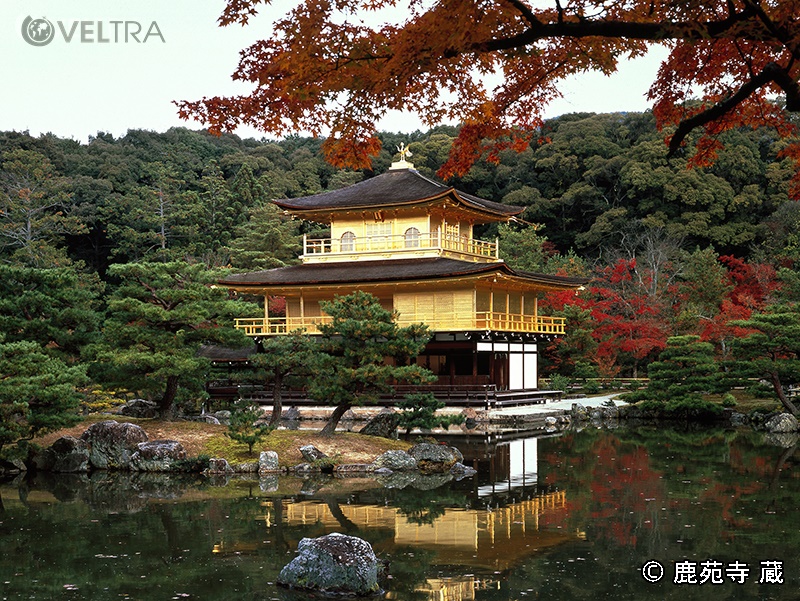
There are many historic buildings registered as World Heritage sites in the vicinity of Kinkaku-ji Temple. Let's introduce a recommended walking route and provide an overview of each location. When visiting Kinkaku-ji Temple, it's worth stopping by these places as well.
Ryoan-ji Temple
Ryoan-ji Temple, located about a 20-minute walk from Kinkaku-ji Temple, is famous for its stone garden. The 75-tatami-sized garden features 15 carefully arranged rocks on white sand, creating an expression of depth that utilizes visual illusions. It is considered the essence of the dry landscape (kare-sansui) style and highly praised. In 1994, along with Kinkaku-ji Temple, Ryoan-ji Temple was registered as a World Cultural Heritage site under the designation "Historic Monuments of Ancient Kyoto."
- Address: 13 Ryoanji Goryonoshita-cho, Ukyo-ku, Kyoto City
- Visiting Hours: 8:00 AM to 5:00 PM (Winter: 8:30 AM to 4:30 PM)
- Admission Fee: 500 yen for adults and high school students, 300 yen for elementary and middle school students
Ninna-ji Temple
Ninna-ji Temple, the head temple of the Omuro school of Shingon Buddhism, is about a 15-minute walk from Ryoan-ji Temple. It was once the residence of imperial family members and retains architectural styles reminiscent of the imperial palace. It houses numerous historical treasures designated as national treasures and important cultural properties, including the Nio-mon Gate, one of Kyoto's three great gates. The temple is also known for its late-blooming "Omuro cherry blossoms" and attracts many visitors during the early to mid-April peak viewing season. In 1994, Ninna-ji Temple was registered as a World Cultural Heritage site under the designation "Historic Monuments of Ancient Kyoto."
- Address: 33 Omuro Ouchi, Ukyo-ku, Kyoto City
- Visiting Hours: 9:00 AM to 5:00 PM (Winter: 9:00 AM to 4:30 PM, last entry 30 minutes before closing)
- Admission Fee: 500 yen for adults, 300 yen for elementary and middle school students
Myoshin-ji Temple
Myoshin-ji Temple, the head temple of the Myoshin-ji branch of the Rinzai school of Zen Buddhism, is a prestigious Zen temple with 3,400 affiliated temples throughout Japan. It is located about a 7-minute walk from Ninna-ji Temple. The temple's distinctive feature is its layout, with the Sanmon Gate, Buddha Hall, and Dharma Hall aligned in a straight line, surrounded by 46 sub-temples, showcasing the unique architecture of Zen Buddhism. Myoshin-ji Temple houses many important cultural properties, including national treasures such as the "Great Lamp of Kokushi" and the "Bonsho" (Buddhist temple bell).
- Address: 1 Hanazono Myoshinji-cho, Ukyo-ku, Kyoto City
- Visiting Hours: 9:10 AM, every 20 minutes. Last entry at 4:40 PM (Winter: Last entry at 3:40 PM) *Only the Ho-do Hall and Daikuroji Hall. The temple grounds are open 24 hours.
- Admission Fee: 700 yen for adults, 400 yen for elementary and middle school students *Only the Ho-do Hall and Daikuroji Hall. The temple grounds are free to explore.
Kitano Tenmangu Shrine
Kitano Tenmangu Shrine, located about a 25-minute walk from Myoshin-ji Temple, is the birthplace of the Tenjin faith, dedicated to Sugawara no Michizane, the deity of learning. The shrine holds a monthly market on the 25th, and the precincts are illuminated at night. It is also renowned for its plum and autumn foliage, offering different atmospheres depending on the season.
- Address: Bakuro-cho, Kamigyo-ku, Kyoto City
- Visiting Hours: 5:00 AM to 6:00 PM (October to March: 5:30 AM to 5:30 PM) *Open at night during the illumination period.
- Admission Fee: Free
Kamishichiken
Located about a 1-minute walk east from Kitano Tenmangu Shrine, Kamishichiken is an old-fashioned flower district. It derived its name from the seven tea houses built with leftover timber during the reconstruction of the Kitano Shrine, serving as rest stops for visitors. The streets still maintain their Edo period atmosphere and are bustling with events such as the "Kitano Odori" performed by geisha and maiko.
Daitoku-ji Temple
Daitoku-ji Temple, a Zen temple founded in the Kamakura period, is about a 23-minute walk from Kamishichiken. Although it fell into disrepair during the Onin War in the Muromachi period, it was rebuilt by the Zen master Ikkyu Sojun. In the Momoyama period, Toyotomi Hideyoshi held Oda Nobunaga's funeral here, leading to the establishment of many sub-temples by feudal lords to show their condolences. The temple's main gate, Sanmon, was expanded by Sen no Rikyu, the renowned tea master.
- Address: 53 Shimo Daitokuji-cho, Kita-ku, Kyoto City
- Visiting Hours: 9:00 AM to 4:00 PM
- Admission Fee: Free for exploring the temple grounds; special openings for the main hall.
Imamiya Shrine
Imamiya Shrine, founded to ward off epidemics and disasters, is located about a 2-minute walk from Daitoku-ji Temple. It is a shrine with historical significance due to its connection to Keishoin, the mother of Tokugawa Tsunayoshi. It is believed to offer benefits related to successful marriages, and its strong faith attracts many visitors.
- Address: 21 Kita-no-Imamiya-cho, Kamigyo-ku, Kyoto City
- Visiting Hours: Free visit (Shrine office: 9:00 AM to 5:00 PM)
- Admission Fee: Free
Gourmet Spots near Kinkaku-ji Temple
Sobadokoro Gontaro Kinkaku-ji Branch
This Japanese restaurant takes pride in its broth, and their Kyoto-style udon suki, which showcases the true value of the broth, is exceptional. The exclusive menu item at the Kinkaku-ji branch, Yuba Ankake Soba Gozen, offers a gentle flavor with chicken, bamboo shoots, shiitake mushrooms, and fish cake wrapped in yuba (tofu skin) and topped with a thickened sauce.
Address: 26 Hiranomiyashikicho, Kita-ku, Kyoto City
Café Yamaneko
A café surrounded by greenery, with its distinguishing feature being the ivy-covered exterior. It is a perfect place not only for café usage but also for lunch, serving freshly baked waffles and generous sandwiches. They also have a terrace seating area, allowing you to relax and enjoy your coffee in a stylish setting.
Address: 39-6 Tōjiin Kitamachi, Kita-ku, Kyoto City
If you want to efficiently explore Kyoto, we recommend local optional tours
Kyoto is one of the top tourist destinations in Japan, known for its accessibility for day trips or overnight stays. However, with limited time, it can be challenging to visit all the major attractions and navigate an unfamiliar city. That's where local optional tours come in handy for efficient sightseeing! VELTRA offers a variety of local optional tours, ranging from recommended Kyoto highlight bus tours for first-timers to private sightseeing taxis that allow repeat visitors to enjoy a more leisurely experience. Be sure to check them out!
*Transportation fees, facility charges, and operating hours are subject to change without prior notice. Please check the official website for the latest information.
*Thank you for reading the article!
To improve YOKKA's service, we kindly request your participation in a survey below.
YOKKA


